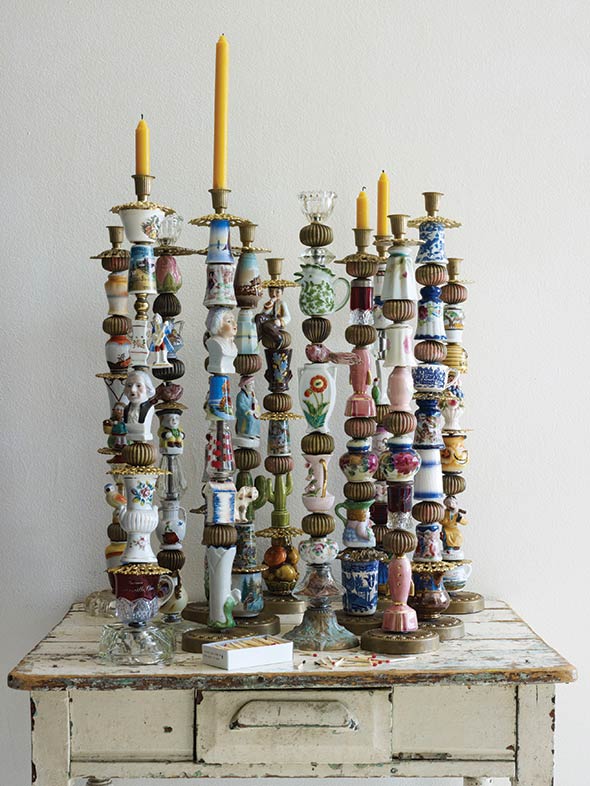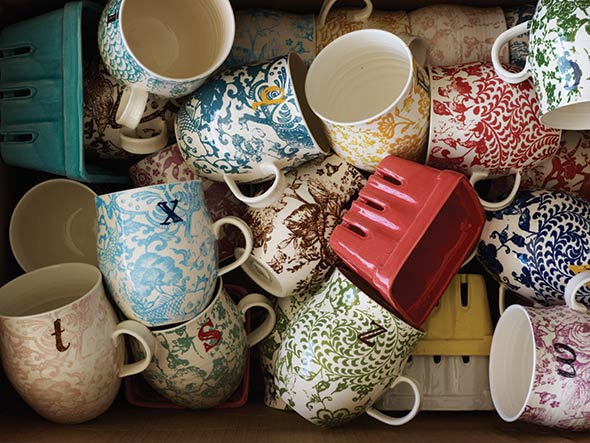Clothing and home retailer Anthropologie scouts artistic talent to design not only its products but also each of its surreal, dream-like locations in an effort to revamp a traditional strategy


Most retailers operate with specific methods, chasing profit via products with the widest appeal. It’s a formula that ensures fun colors and funky styles are pushed aside in favor of the lowest common denominator. Meanwhile, clothing and home retailer Anthropologie has developed a dedicated and passionate audience by refusing to conform to the conventional wisdom of retailing.
From a converted dry dock in Philadelphia’s Navy Yard — a structure which earned an AIA 2010 Honor Award for Meyer, Scherer & Rockcastle, Ltd. — Aaron Hoey, general merchandise manager of women’s apparel, argued that the company is unique due to a free-spirited culture. He claimed, “We would rather err on taking a risk that’s a smart risk than not risk at all. A lot of retailers are trying to maximize their gross margin, so they are willing to cut corners and take details out of things. We never try to take anything out. We don’t try to mass produce or cut corners. We believe in the greater good and working with really talented people.”
These ideas all sound great, in theory. But maybe the creative types are made to feel this way while bean counters pull the strings? Not so, claimed Keith Johnson, Buyer at Large. He explained, “We really value the artist who works in our store and works in our design team; it’s really who we are. So, I think, the guys who look at the numbers ultimately look at that, too. Yes, of course, there are times when there is certain business we look to drive the profit, in order to do the things that we love—the more artistic stuff. Most of the time, from a business point of view, we very happily continue on our merry way.”
Consider, for example, a prevailing trend for collaboration in retail: the famous guest designer program—think Karl Lagerfeld for H&M or Macy’s, Target’s collaborations with Missoni and Jason Wu, or Uniqlo’s guest designer program with the likes of Jil Sander and Opening Ceremony. Anthropologie’s approach stands in marked contrast to these models. The method is dictated, in part, by Johnson. He curates seasonal gallery shows with small groups of artists. The items could be principally fine arts, such as paintings, small crafts or sculpture; or he might select more functional goods like chairs or bowls. Those works then migrate or inform products in the actual stores. It could mean a sketch or drawing ends up on dinner plates or stationary, or a handmade line of furniture finds a larger audience.
Nathalie Lete and Rebecca Rebouche are two examples of artists who fortuitously migrated into homewares. Rebouche was originally commissioned to create an original painting for the Anthropologie in her hometown of New Orleans. Soon, her works were also hanging in the Rockefeller Center location. The interactions spurred by those occurrences spawned a mini-collection of bedding, dinnerware, puzzles, and wall art. A similar story is true for Lete, a French artist whose paintings were featured in a Johnson-curated show at the Rockefeller Center location. Now Anthropologie commissions four of her paintings annually, which are featured on a collection of dinnerware.
Further, it’s a model which ensures unique and artistic items are developed for Anthropologie. This often involves global traveling to find niche creators. After all, in order to create unique offerings, the company needs to search in unique places. The buying team will target a location, like New Orleans or Amsterdam. They then set about researching and networking to find the most skilled artisans and underground galleries. Then city visits, as chronicled in the 2009 Sundance Channel series Man Shops Globe, initiate an ongoing dialogue between buyers like Johnson and localized craftspeople.
Johnson explained, “There is a lot of follow up. There’s the discovery, of course, which is fantastic. Then there’s making sure if an artist has said they’re going to create something. Sometimes it can be like herding cats. You have to make sure the things are packed correctly, and things are as promised, like the quality.”
He continued, expounding how working with artists is both rewarding and surprising. “It’s part of the process,” he said. “I try to have enough projects going at one time. There’s going to be some fall out somewhere, where somebody isn’t able to complete their vision the way they wanted it, or something they wanted to change. It’s all just part of it. I have a deep appreciation for the process. To get something truly wonderful,
a good friend told me, he works on something until it stops annoying him. I don’t want to interrupt that. To say you put a time frame on something, you might get less than what you wanted. Then there are some people who do better with a timeframe.”
Johnson also pointed out that each of the 160 Anthropologie stores is able to customize the location’s visual presentations. There’s no formal set guide to ensure brand consistency for all products. And there’s no cooperate-style localization initiative, such as with Macy’s. Instead, the consistency is through a dazzling variety of eclectic styles. Individual stores are empowered to shape direction based on the local clientele. So while the mood or products might be the same in Dallas or Chicago, the actual experience can vary dramatically.
“It’s as personal of an experience as you can possibly have,” claimed Johnson. And, in fact, the company is able to create an intimate feeling, almost like a small boutique. The ethnic personality and global sensibility of the goods create an experience of discovery. Even the floor fixtures are available for purchase, and furniture offerings are often vintage finds or small runs crafted in an updated, yet historical style. Hoey said the goals are for “When the customer walks through, it’s an eclectic hunt, a find; it’s an adventure, an escape from reality.” Part of that escapism goes back to the exclusive product offerings. Marcia and Bill Finks, a husband and wife team working under the Primitive Twig banner, had been making metal sculptures since 1990, mainly from salvaged metal, antique parts, and found items. “We always negotiate exclusivity before price,” Hoey proudly claimed.
For Anthropologie, the duo created exclusive candle tapers, handmade from antique pieces of porcelain, tin, and glass. The piece will be featured in an upcoming December catalog. It’s a perfect example of the competitive advantage Johnson described when he said, “I do think that we are not really thinking about making huge quantities of things. We may only find a few hundred customers for certain items. But those are the items that get us really excited.”
Johnson explained the niche appeal when he said, “We’re not casting such as wide net. We’re very customer-specific. The people that do find us are sort of meant for us.”
Urban Outfitters, Anthropologie’s parent company, actually spans several brands: Urban Outfitters, Anthropologie, Free People, Terrain, and BHLDN, a recently launched retailer for all things bridal. The company has been criticized for being a large corporation while presenting its brands as independent-minded. And while it is true the company claims billion-dollar profits, the alternative of offering an impersonal, uncaring facade is far less appealing.
Compared to any other significant retailer, the women who shop at Anthropolgie are extremely devoted and loyal to the brand. And while there’s a range of factors that foster this obsession, the root cause is that Anthropologie does not merely look to artists with the intent of extrapolating an artistic identity. But the people of Anthropologie listen to artists and dialogue with them. Hoey summarized, “There’s a secret behind the products: the vast majority have stories behind them. It comes from authentic relationships with our internal design team, as well as artists and designers, in the world. The products we end up with end up becoming something no one has seen before. We spend a lot of time inventing things creatively.”
anthropologie.com
TEXT BY Michael Cohen

